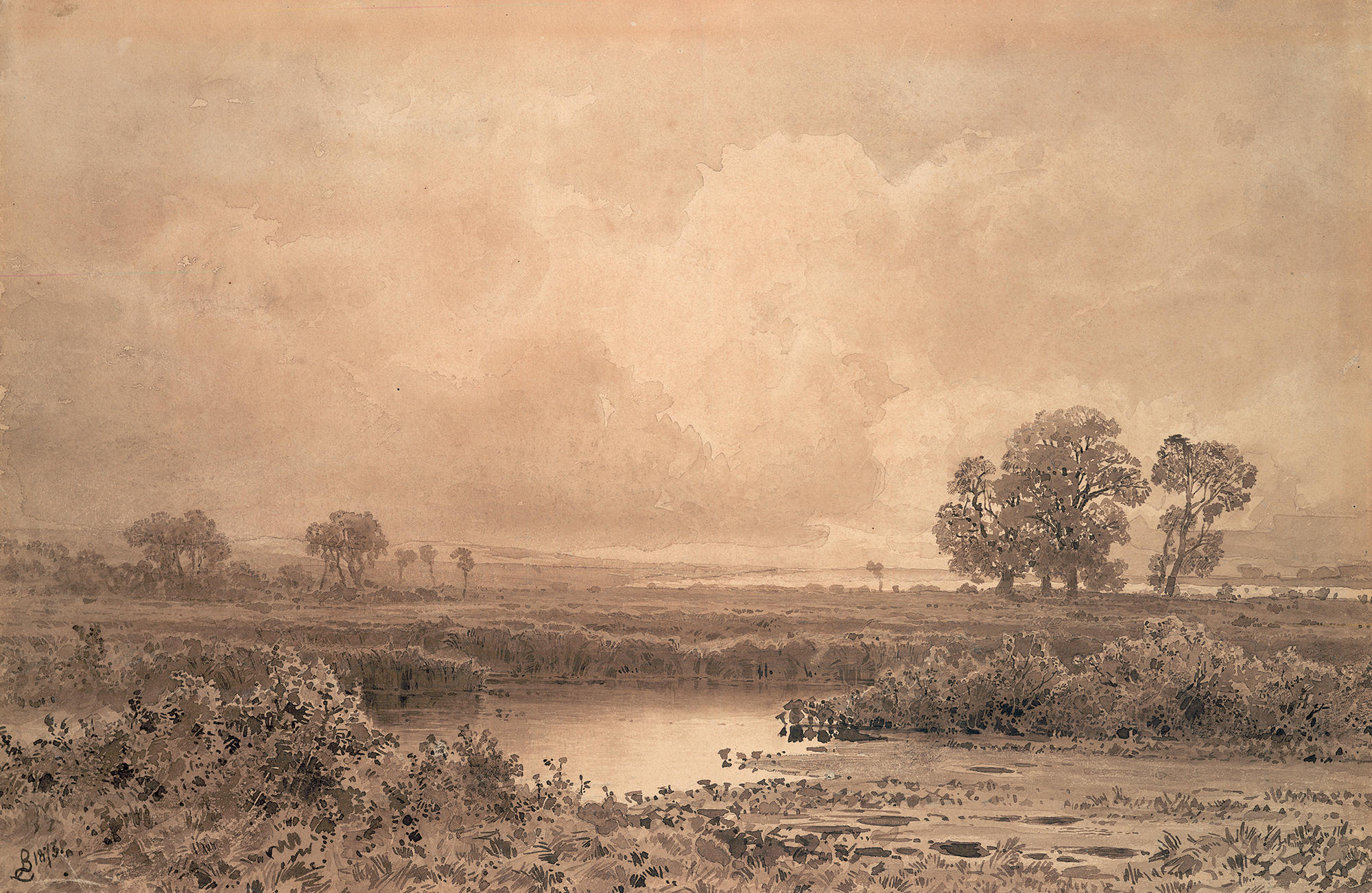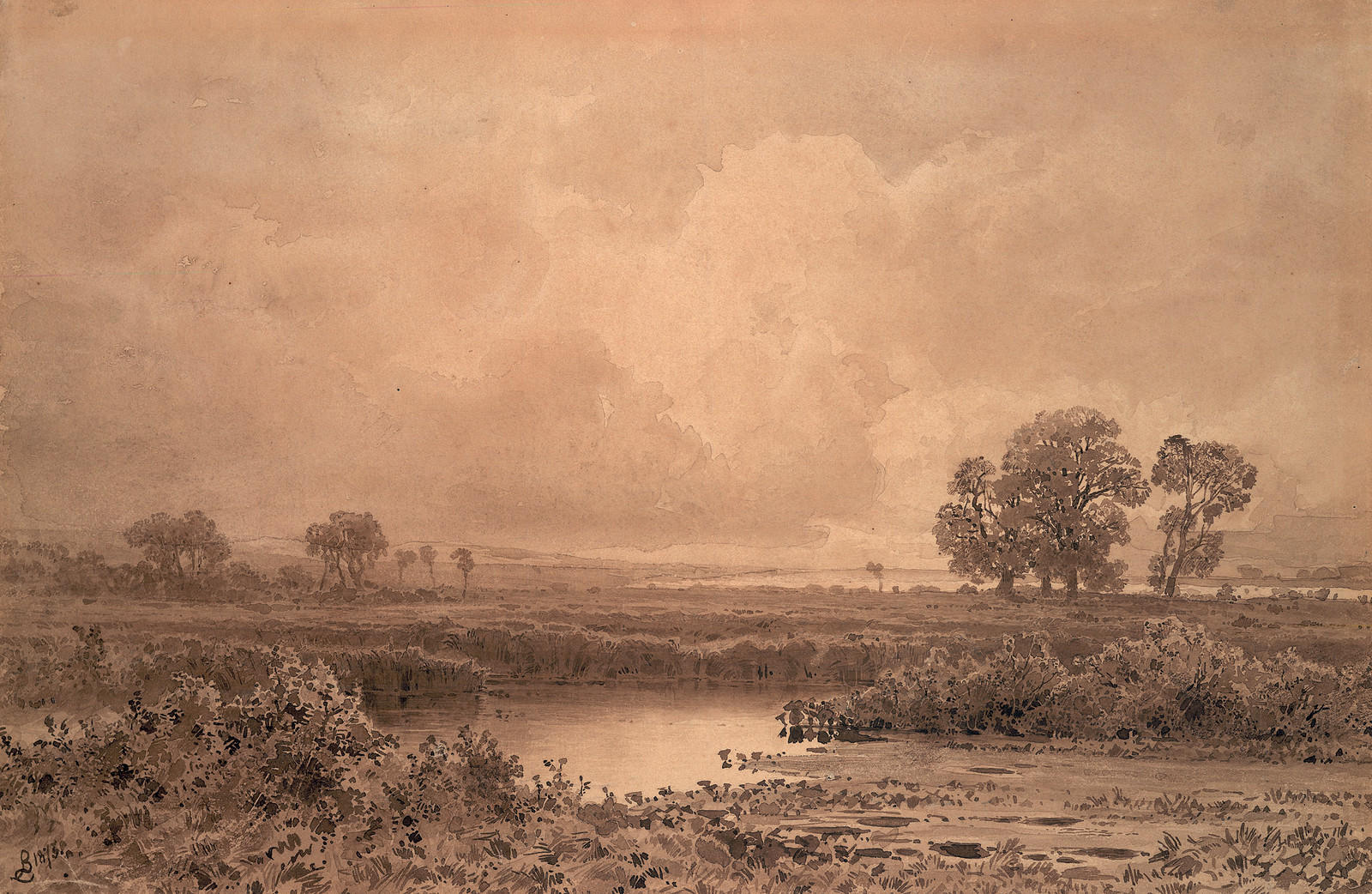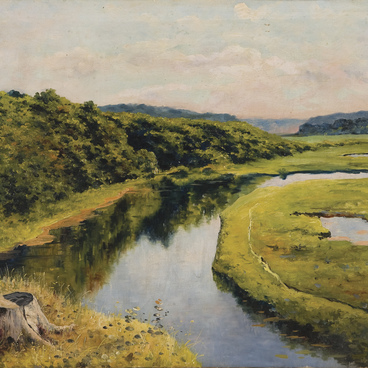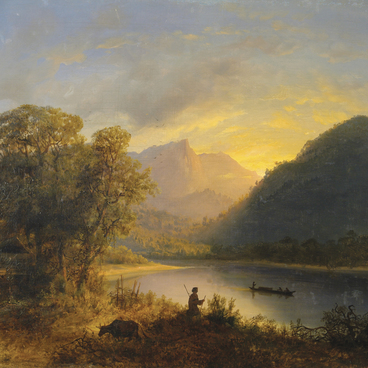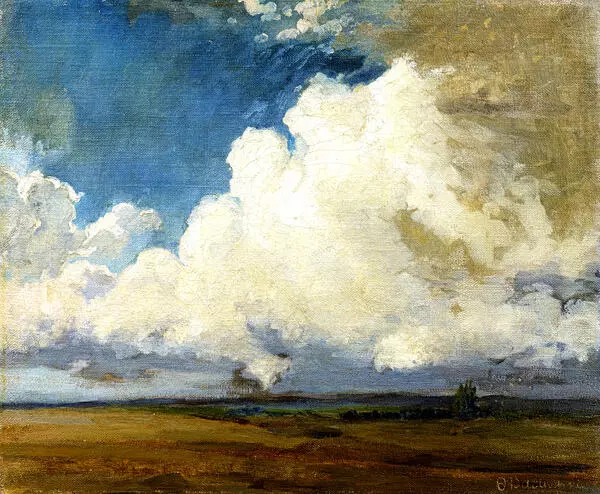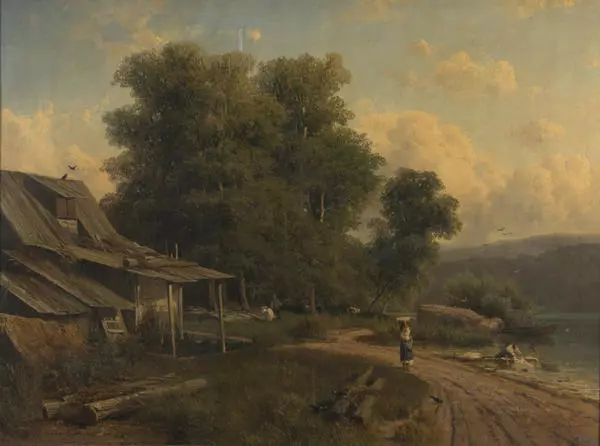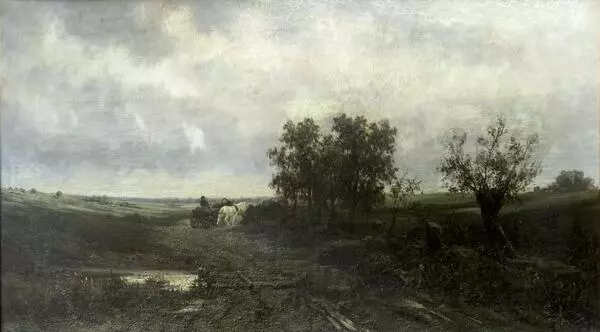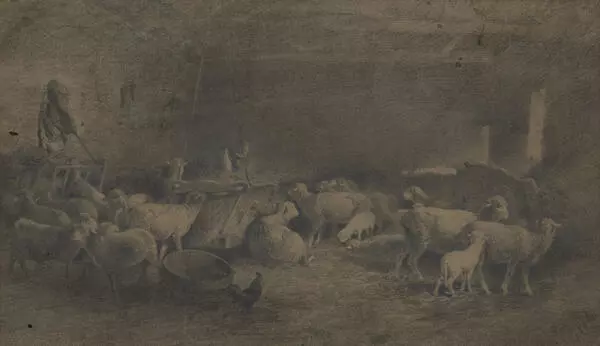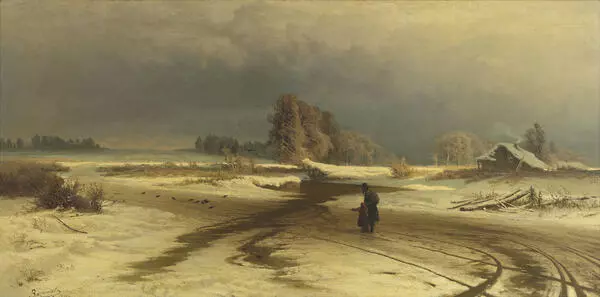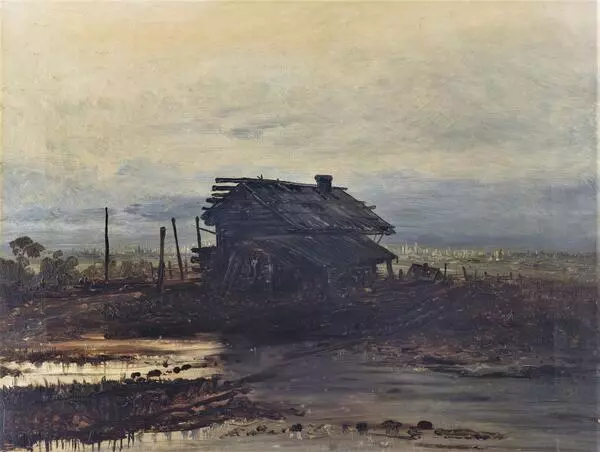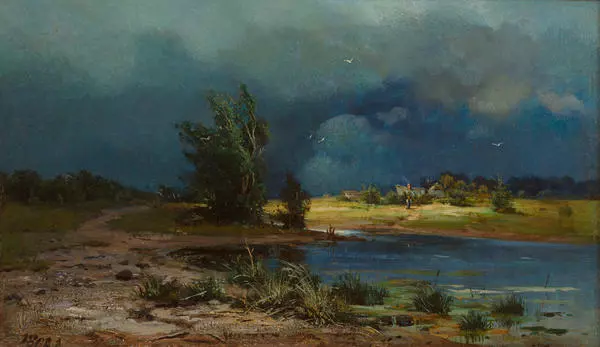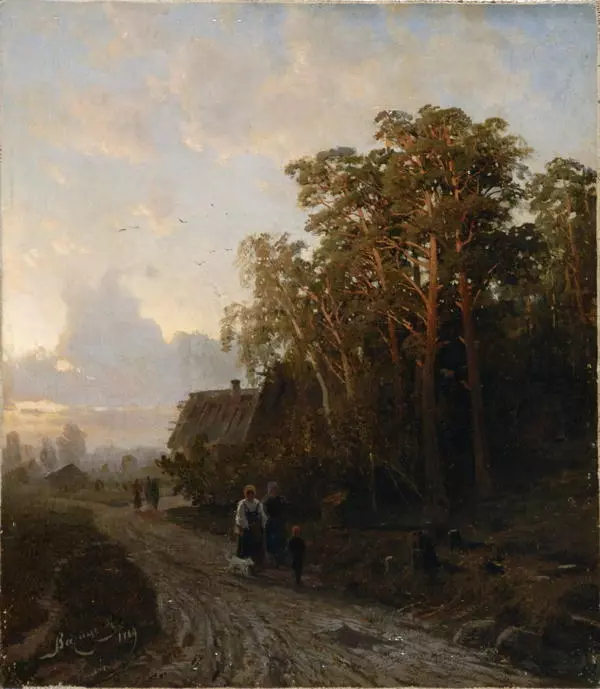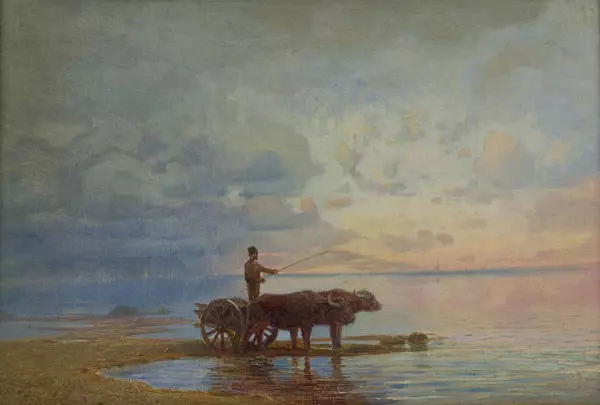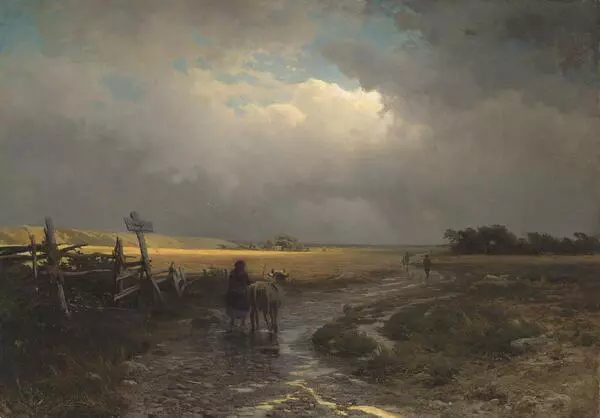The future painter was born in Gatchina and spent his childhood in St. Petersburg. His biographers have found no documents recording the exact date of his birth, but it is widely accepted that the painter was born in 1850 into the family of a minor postal official. After his father’s early death, he had to work part-time, from the age of 15, in the post office earning three roubles a month.
He gave up his employment soon and began to work for Pyotr Sokolov, a restorer of the Academy of Arts. At the same time, he began to study at the Drawing School of the Society for the Promotion of Fine Arts in St. Petersburg. By the time he graduated, Vasilyev had already joined the community of famous painters and formed a particularly close friendship with Ivan Kramskoi and Ivan Shishkin. In 1865, he took part in the first competition for the best genre painting on a Russian theme held by the Society for the Encouragement of Artists. In 1867, Shishkin took Vasilyev along with him to Valaam where they worked together for over five months, from June to the late autumn. In 1869 Vasilyev went on sketch trips to the Tambov Governorate, to the estate of Count Pyotr Stroganov in the summer, and to Ukraine in the autumn (to Stroganov’s estate as well).
In the early 1870s, he did such paintings as The Thaw (1871) and Wet Meadow (1872). The replica of The Thaw painted by him was displayed at the International Exhibition held in London in 1872. While working on this painting, Vasilyev caught a cold, and he was diagnosed with tuberculosis. The Society for the Promotion of Fine Arts allocated some money for his trip to the Crimea (even before his departure Vasilyev was enrolled at the Academy of Arts as a non-matriculated student and was awarded the title of a painter of the first grade on condition that he passed an examination in an academic subject).
Vasilyev spent the last two years of his life in the Crimea. He moved to Yalta with his mother and younger brother. His principal artwork of that period was the big painting In the Crimean Mountains (1873; it is now in the collection of the Tretyakov Gallery). The painter worked a lot and hard, sometimes even to the detriment of his treatment. The efforts to stop, or at the least slow down, the progression of the disease failed. The exhibited landscape Grey Day. Swamp was painted in the last year of Vasilyev’s life. He continued to paint in the spring of 1873, and on 24 September of that year he passed away.
He gave up his employment soon and began to work for Pyotr Sokolov, a restorer of the Academy of Arts. At the same time, he began to study at the Drawing School of the Society for the Promotion of Fine Arts in St. Petersburg. By the time he graduated, Vasilyev had already joined the community of famous painters and formed a particularly close friendship with Ivan Kramskoi and Ivan Shishkin. In 1865, he took part in the first competition for the best genre painting on a Russian theme held by the Society for the Encouragement of Artists. In 1867, Shishkin took Vasilyev along with him to Valaam where they worked together for over five months, from June to the late autumn. In 1869 Vasilyev went on sketch trips to the Tambov Governorate, to the estate of Count Pyotr Stroganov in the summer, and to Ukraine in the autumn (to Stroganov’s estate as well).
In 1870, Vasilyev travelled with Ilya Repin along the Volga – from Tver to Saratov.
In the early 1870s, he did such paintings as The Thaw (1871) and Wet Meadow (1872). The replica of The Thaw painted by him was displayed at the International Exhibition held in London in 1872. While working on this painting, Vasilyev caught a cold, and he was diagnosed with tuberculosis. The Society for the Promotion of Fine Arts allocated some money for his trip to the Crimea (even before his departure Vasilyev was enrolled at the Academy of Arts as a non-matriculated student and was awarded the title of a painter of the first grade on condition that he passed an examination in an academic subject).
Vasilyev spent the last two years of his life in the Crimea. He moved to Yalta with his mother and younger brother. His principal artwork of that period was the big painting In the Crimean Mountains (1873; it is now in the collection of the Tretyakov Gallery). The painter worked a lot and hard, sometimes even to the detriment of his treatment. The efforts to stop, or at the least slow down, the progression of the disease failed. The exhibited landscape Grey Day. Swamp was painted in the last year of Vasilyev’s life. He continued to paint in the spring of 1873, and on 24 September of that year he passed away.
